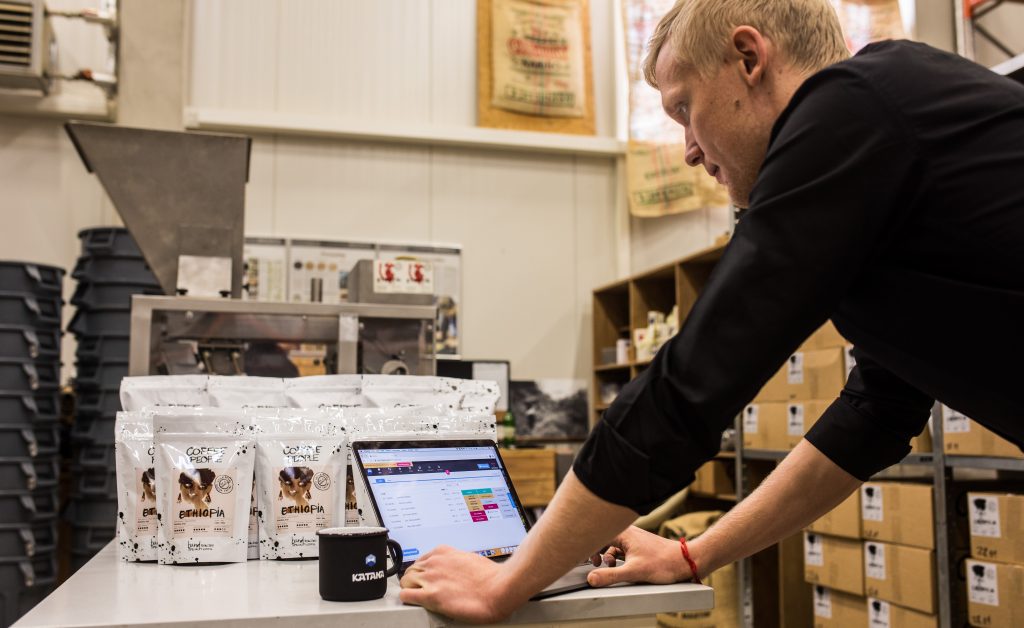10 Ways to Improve Your Shop Floor Scheduling
In this article, we look into the 10 ways you can improve your Shop floor scheduling and the best tools for the job.

It’s daunting when calculating selling price and finding that sweet spot. This article will help you tackle this challenge and find the best pricing strategy for your manufacturing business.

This is one of the hardest things to get right in any business.
You’ve worked hard manufacturing your goods, and your items are ready to hit the market. But, when it comes to the price you’ve set, are you undervaluing your goods? Or are you way overpricing them?
Failing to get your pricing right can drive away customers and conversions on your e-commerce site.
That’s why we’ve put together this article so you can learn how to calculate the selling price of a product.
The longer you leave this question unanswered, the longer you’ll be losing money. Setting the right price is essential since your efforts will be undone by not focusing on this. By the end of this article, you’ll be able to calculate your selling prices and the best techniques for implementing them.

The selling price, be that of a product or service, is the customer or client’s final price.
It’s extremely important to know how to calculate selling price because if you don’t make a profit while also securing a position in the market, your business will not survive. In short, successfully knowing how to calculate selling price of a product is a win-win for you and your customer. If done right — they get a good deal, and you get a fair price.
For direct-to-consumer brands, there’s a chance you can charge more if your brand image is in high demand like many clothing brands do, such as Adidas or Nike.
Still, you’ll need a solid portfolio of great quality products and a powerful marketing campaign to justify your prices. To ensure high quality products, take a look at the production quality control checklist.

The average selling price (or ASP for short) is the price you charge your clients for your goods or service.
So, regardless of if you sell an item with 10 SKU variants or 100, you calculate selling price ASP by looking at the total revenue earned from those sales and dividing the amount by the total number of units sold. It’s critical to calculate your average selling price as it allows you to monitor trends and make predictions on the marketplace. If you’re a start-up manufacturer, it can be a great way to determine a pricing strategy.
Cost Price Vs. Selling Price
Cost Price: The price 3rd party sellers pay and incur for purchasing items from a manufacturer.
Selling Price: The amount the 3rd party sells the item to their customers.
NOTE: If you sell directly to consumers, you’ll be looking at the selling price too.

To cut a long story short, you’re always aiming to make a profit. Otherwise, your business won’t grow.
Now, the longer version. As a manufacturer calculating selling price, you’re going to need first to calculate your cost price, otherwise known as manufacturing costs, using this formula:
Let’s say the cost price of an item is $50.
The short answer is you need to charge more than this figure to make a profit. However, a rule of thumb is to add a 25% mark-up — a technique known as cost-plus or mark-up pricing. Your selling price formula will look something like this:
In this case, the selling price would be $62.50. However, you need to consider other factors, such as:

Planned profit pricing combines your cost per unit with projected output for your business.
You can use it to work out if your business will be profitable at your current pricing strategy. If not, you can increase prices or increase output. The flexibility makes it suitable for manufacturing businesses.
This pricing charges the maximum (or very close to the maximum) for what the market allows.
If an item costs $100 to manufacture, and the most a customer will pay for it is $500 — this is the market limit. This is a pricing strategy that can lead to the highest profit margins. But beware — this is not a sustainable strategy — charging at the upper limits of what the market can bear leaves the field open for a wily competitor to undercut your prices easily.
In short, it leaves you vulnerable to your competitors’ pricing strategy.
After you know how to calculate the selling price, you can work out the GPMT of your business.
Say a company has $10,000 in revenue, and the COGS is $6,000. $10,000 minus $6,000 leaves you with a $4,000 gross profit. Dividing this with the original $10,000 leaves you with a gross profit margin of 0.4.
Many manufacturing businesses aim for a GPMT of at least 20%, but this depends on your industry and costs. You can use this metric to analyze progress to your ideal gross profit margin and adjust your pricing strategy accordingly.
This is why a retailer is more likely to price a product at $19.99 rather than $20.00.
Customers are more likely to make a purchase when it is $19.99 because our brains tell us — “This is less than $20.00? it’s a bargain.” Other industries tend to use this technique, such as those in real estate. You can try it yourself.
Take the previous price of $62.50. Would $59.95 be the more enticing price that leads to higher profits?
If your pricing strategy and your competitor’s pricing strategy are the same, then it’s like missing out on utilizing a helpful tool.
Like it or not, customers infer a lot of information about your business from your prices. Another thing — the results of price changes are not always linear. For example, a company could raise its prices by 1% and see overall profits increase by far more than that, even if demand remained the same.
The best strategy you can apply is a flexible one.
For example, WTMWB (What the Market Will Bear) is better during short periods when you need to recoup costs quickly, such as releasing a new SKU after a period of R&D. Cost-plus pricing is how to calculate selling price per unit. In contrast, GPMT helps you decide if this approach can scale up.
Once you come up with a suitable price, you can apply most significant digit pricing.
Commit to changing your price for a set minimum time and stick to that plan. Don’t keep changing prices, as this could reduce your customers’ trust in you.

Let’s use the example of furniture manufacturers to illustrate the steps to finding a pricing strategy.
You know your manufacturing costs and resources spent, but is this enough to add a markup and call it a day? No. Pricing is contingent on the current state of the marketplace and where your products fit into it.
First, you need to understand your market.
Do all the research you can on the criteria of furniture pricing. These could be:
You need to figure out how your product fits into the current landscape.
It’s good to set a minimum price that you will not go below. If you think of boundaries like this, it helps you think clearly in the stressful tasks of pricing and negotiation. Don’t undersell yourself or go below your minimum price.


Now you know why finding the right pricing strategy for your business is so important.
You need to invest the time to do your business justice. However, performing audits, even regular ones, can slow down your business or even reveal that you’ve been pricing your items incorrectly. The best solution to determining how to calculate selling price is to adopt a cloud-based manufacturing system with real-time monitoring and automatic cost price calculations, such as Katana.
Katana helps manufacturers take control over their production, carrying costs, and work-in-progress costs, but also helps with calculating selling price too by looking into:
This will allow you to quickly get a better overview of your costs and make better pricing decisions.
You can check out the video below for a better understanding of how to track costs of materials and products in Katana: